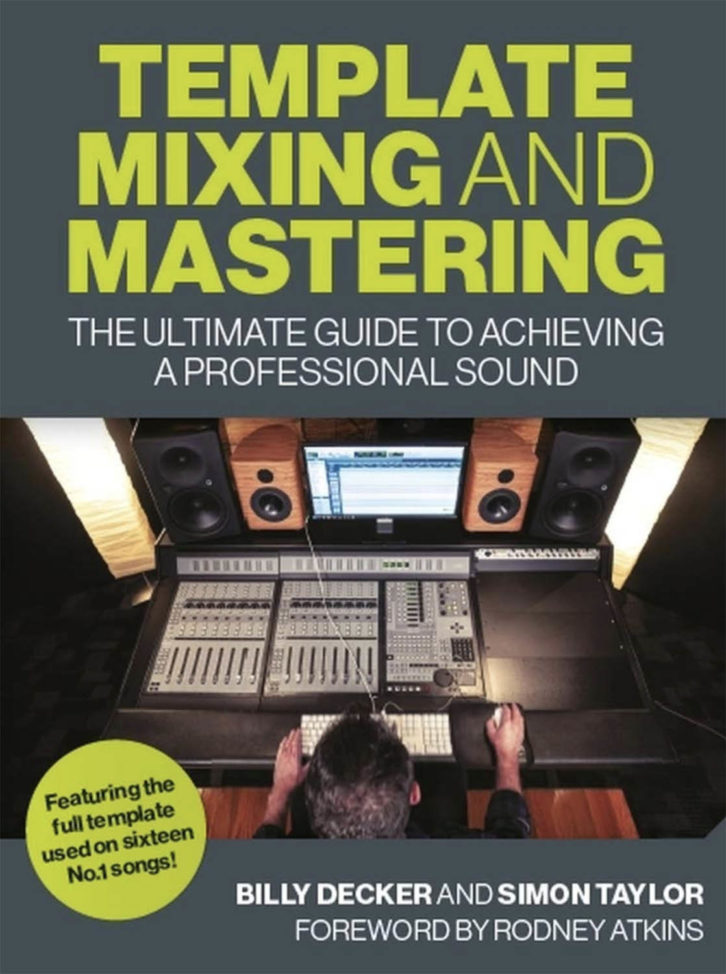
NASHVILLE, TENNESSEE: The online school Unstoppable Recording Machine Academy’s “Nail the Mix” vignettes allow engineering students to “sit in” on a full day’s recording session with veteran mix engineers. A few years ago, acclaimed Nashville mixer Billy Decker (Rodney Atkins, Sam Hunt, Parmalee) contributed a session. Decker has mixed sixteen Billboard #1 songs, has sold over 50-million RIAA-certified albums, and is responsible for streaming numbers in the billions. Whereas most engineers tackle one song in an eight-hour “Nail the Mix” lesson, Decker tore through five songs in the same amount of time! Decker moves incredibly fast! His secret is templates and lots of them, but that’s not such a secret anymore since the publication of Template Mixing and Mastering: The Ultimate Guide to Achieving a Professional Sound (Crowood Press). Because Metric Halo plugins are among Decker’s favorite tools, the book is loaded with examples of Metric Halo plugin templates.

“I’m not expecting Harry Potter-level sales,” Decker joked. Book publisher, author, and engineer Simon Taylor approached Decker with the idea of writing a book together on Decker’s unique template mixing system – a system that allows him to work fast and to achieve predictable, professional mixes that sound awesome on any playback system. The duo worked together to explain Decker’s system from top to bottom, from start to finish. “If you follow the examples in the book, you will sound just like me,” he said, this time not joking. “It’s all broken down, instrument by instrument, channel by channel, plugin by plugin.” Despite Decker’s modicum of modesty, the book has spent time in Amazon’s #1 position and completely sold out of its first printing in a matter of months, prompting a second printing.
Decker equates mixing to painting. “My job is to place the music within the frame,” he said. “If I paint black over red (i.e., mask frequencies), you’re not going to see the red. Instead, I can move the red left or right with panning or I can separate the colors with filters or reverb.” To get the kind of separation he’s after, Decker learned the frequency ranges and responses of every common instrument by heart. In part, he learned from online compendiums of instrument spectra. He honed that knowledge by investigating the spectra of instruments himself with Metric Halo’s SpectraFoo sound analysis software. “It’s the most important thing you can learn,” he said. “I know where every instrument lives and where it doesn’t live. I don’t need to spend time sweeping bandwidths. For example, I know that an acoustic guitar is never going to be below 125Hz. I have a ChannelStrip acoustic guitar template set up with all the hit points for acoustic guitar. It’s barely going to need to be touched if ever.” Decker is so versed in the frequency profiles of the instruments he works with that he was able to verbally direct another engineer onstage at a conference to build an awesome mix in just an hour!
Decker graduated near the top of his class from Full Sail and dropped right into lead engineering positions. “I was never an assistant, and I never had an assistant,” he said. “No one was setting up my mixes for me, and I came to rely on templates as a kind of electronic assistant.” Decker has a folder of templates stretching back to 2003. Most of the templates are named after the artist who inspired its first use, which makes it easy for Decker to instantly achieve any effect he has ever achieved in a past mix.
 Metric Halo plugins are Decker’s top choice for most applications, and each of his sixteen #1 hits uses a profusion of Metric Halo plugins. “Metric Halo sound quality is unmatched,” he said. “Depending on how I use them, Metric Halo plugins can be completely transparent or loaded with character. Their user interface is easy and intuitive, and I love the real-time spectrum analysis. It makes it easy to high-pass and low-pass aspects of the sound that aren’t essential, to diagnose problems, and to generally assess what’s working and what isn’t working with a particular sound.” Consequently, Metric Halo plugins are highlighted throughout Template Mixing and Mastering, with the flagship ChannelStrip plugin getting the most action. ChannelStrip templates are used liberally on acoustic guitar, electric guitar, bass, fiddle, backing vocals, and lead vocals. They’re on all of Decker’s drums too, including the samples he routinely uses to replace aspects of the recorded drums. Other favorites include Metric Halo’s Character, Precision De-Esser, and TransientControl.
Metric Halo plugins are Decker’s top choice for most applications, and each of his sixteen #1 hits uses a profusion of Metric Halo plugins. “Metric Halo sound quality is unmatched,” he said. “Depending on how I use them, Metric Halo plugins can be completely transparent or loaded with character. Their user interface is easy and intuitive, and I love the real-time spectrum analysis. It makes it easy to high-pass and low-pass aspects of the sound that aren’t essential, to diagnose problems, and to generally assess what’s working and what isn’t working with a particular sound.” Consequently, Metric Halo plugins are highlighted throughout Template Mixing and Mastering, with the flagship ChannelStrip plugin getting the most action. ChannelStrip templates are used liberally on acoustic guitar, electric guitar, bass, fiddle, backing vocals, and lead vocals. They’re on all of Decker’s drums too, including the samples he routinely uses to replace aspects of the recorded drums. Other favorites include Metric Halo’s Character, Precision De-Esser, and TransientControl.
How does Decker know when a song is done, especially if he has only been working on it for a scant hour? “I shoot from the gut,” he said. “Back in the day, I would labor over every decision, night and day. I found out that I started second-guessing my choices and things went downhill. Instead, I know it’s right when it’s right, and my templates get me to ‘right’ so quickly! I know there are mixers out there who want to do everything from scratch, but I think they’re totally wrong [laughs]. With templates, I can get those mixers in and out of the studio so they can get home to watch more Netflix and not be trapped in the studio every waking hour! They need to see some sunshine!”
Template Mixing and Mastering: The Ultimate Guide to Achieving a Professional Sound, plus Metric Halo’s Production Bundle and plug-ins is your roadmap to getting more work done faster so that you, too, can, “see some sunshine!”
ABOUT METRIC HALO Based on the Gulf Coast of Florida, Metric Halo provides the world with award-winning software and hardware recording, processing, metering, and analysis solutions.










